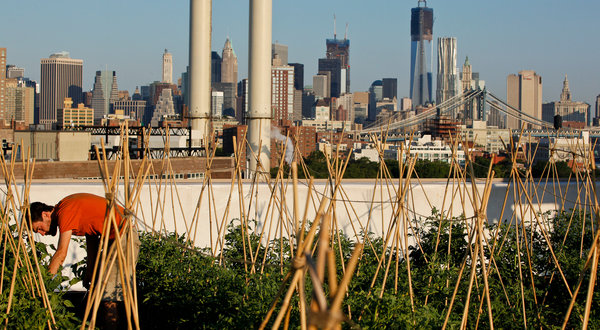Feeding Cities

A rooftop garden in Brooklyn (Source: New York Times)
The complex relationship between cities and agriculture was a hot topic this spring at the “Feeding Cities” conference at the University of Pennsylvania. Growing populations are demanding more food, as well as increasing the geographic footprint of cities. Once fertile land on the outskirts of cities is being developed, and agriculture has become dominated by large scale corporate farming, which further complicates food distribution issues. However, Heather Grady of the Rockefeller Foundation stated in her key note speech at the conference that by getting rid of waste in processing, delivery and sales, as well as conserving land for agriculture within and surrounding urban areas can help address global food security issues.
Although food security issues are present at a global scale, solutions are being explored at a more local level. The Urban Design Lab (UDL) of Columbia University’s Earth Institute undertook a study of the feasibility of urban agriculture in New York City. The UDL published their results in The Potential for Urban Agriculture in New York City report in 2011. The study identified almost 5,000 acres of vacant land likely to be suitable for farming in the five boroughs of New York City, as well as more than 1,000 acres of New York City Housing Authority (NYCHA) green space, underutilized open spaces, and Greenstreets.
On Staten Island in particular, a large portion of the vacant land was found not to be suitable for farming, due to the difficulty of establishing a farm on such sites, as well as the problems innate in converting valuable ecological resources such as wetland or forest to food production, including much of Freshkills Park. Although there are currently no plans to incorporate agriculture into the park plans, the study found over 4,000 acres on Staten Island that have the potential for urban agriculture.
The report outlined the numerous benefits to developing agricultural spaces within or near urban areas, including the potential to reduce food transportation costs and environmental effects, as well as provide opportunities for economic development and diminish the disparities in access to healthy foods. However, in order to become a viable option to food production for the masses, urban agriculture must overcome challenges of scalability, energy efficiency and labor costs.




